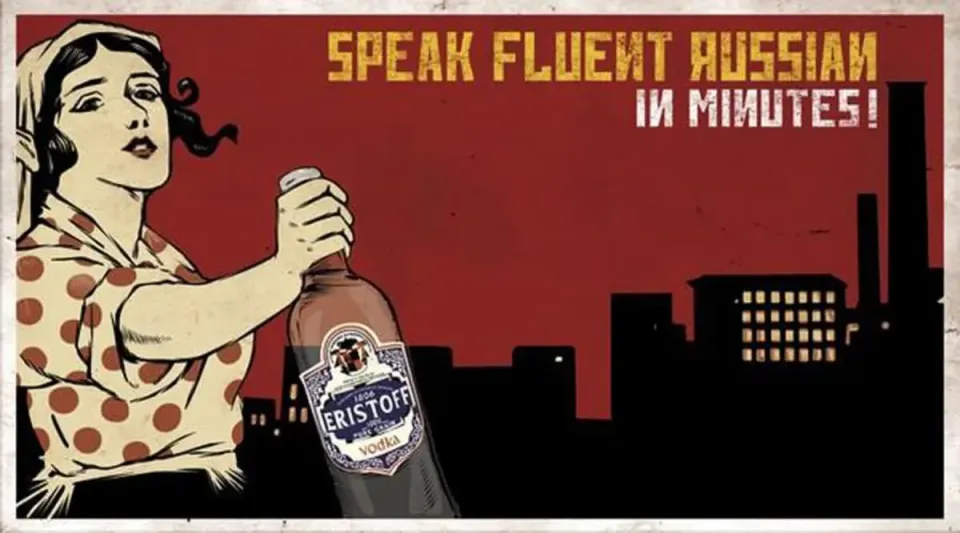THE DEVIL'S JUICE

Russia, a large country spanning across eastern Europe and northern Asia has had its fair share of issues like any other country in the world. As well as the political structure, there has been another powerful force that has held the nation hostage. Vodka may be one of the most common things that foreigners associate with Russia/Russians, the heavy drinking Russian becoming a well known trope in the media for many decades. This stereotype still lingers and is something that remains a point of contention.

As mentioned in episode five of the podcast, Russia has had a long and complicated relationship with alcohol that dates back hundreds of years. Alcohol was weaponized by the ruling class very early on in history as a means to keep the larger working class docile. The peasants that would remain intoxicated were less likely to dissent as well spending most if not all of their wage in the taverns which remained a popular pastime.
All Tavern owners had to pay a kind of tax to the treasury, regardless of how alcohol they successfully sold, this in turn incentivized the sale of as much alcohol as possible. The government received large profits from the sale of alcohol, in turn encouraging Russians to drink as much as they possibly could. Taverns were so popular that women would have to regularly drag their husbands out of the establishment, at one point during the 1700s about a third of all the men in Russia were in debt to a tavern.
This system came to benefit only the state as the more money spent, the better it was for the economy overall so it was no surprise that state officials regularly turned a blind eye to the growing problem of alcoholism. At some point in time, alcohol sales made up half of the country’s revenue.

Russia’s alcohol problem has remained a defining feature of the country up until recently. Addiction is a hard thing to shake when it has been normalised throughout history. So normalised that in 2009 the World Health Organisation (WHO) reported that alcohol consumption in Russia was more than double the critical level. The critical level is considered to be the amount that poses a considerable threat to a nation’s health which is more than 8 litres per year. At the time, the WHO reported that for each person in Russia, 18 litres of spirits per year were consumed. This includes children and the elderly, as children of school age would also drink. This figure far exceeds the critical level and has had harrowing consequences, such as low life expectancy.
Russia is known to have high mortality rates particularly amongst working age men. This is due to the relatively poor health of older Russians, I say this because younger generations have recently taken up more healthy lifestyle choices and choose to be conscious of their fitness and health. This may be a mixture of seeing their loved ones die too young and a global push for better health which has particularly affected younger people.

There are extra stresses that come with living in a communist run country, heavy censorship, diminishing human rights, large scale corruption in most if not all industries and more. The same can be said in every other country because these things do happen everywhere. However when one of Russia’s oldest human rights groups, Movement For Human Rights, was shut down by the supreme court in November 2019 then it is clear that the Russian government is very much against the people. Citizens are heavily monitored and freedom of speech when it comes to speaking on the actions of the government or any kind of criticism against it is pretty much criminal.
With that being said, Russia’s alcohol problem goes hand in hand with the country’s political situation, which has always been quite authoritarian. When a nation restricts their citizens of so many basic freedoms, things that are still available usually tend to be abused. High alcohol consumption was not just a norm but also encouraged by the Russian government throughout most of history. As it was weaponized then, it continued to be weaponized throughout the 20th century as generation after generation drank more than was safe for the human body to consume. Alcohol was even commonly sold on street kiosks before stricter alcohol control measures were introduced.

Where is Russia today? The nation has come a long way and continues to battle a problem that is centuries old but alcohol consumption declined by 48% from 2003-2016 according to the WHO. Though there are spikes in consumption of unrecorded alcohol which I speak about candidly in the podcast, there is a relatively strong effort to curb the amount of deaths caused.
Vodka is still a beverage that is associated with Russia but it is not as popular as it once was in the country. Many natives are more likely to reach for alternatives such as wine or beer, younger Russians prefer these alcoholic drinks but are also very aware of the negative connotations tied to vodka. It’s not an exaggeration to say that most Russians would like to distance themselves from the old stereotypes and even older history.
Comments ()